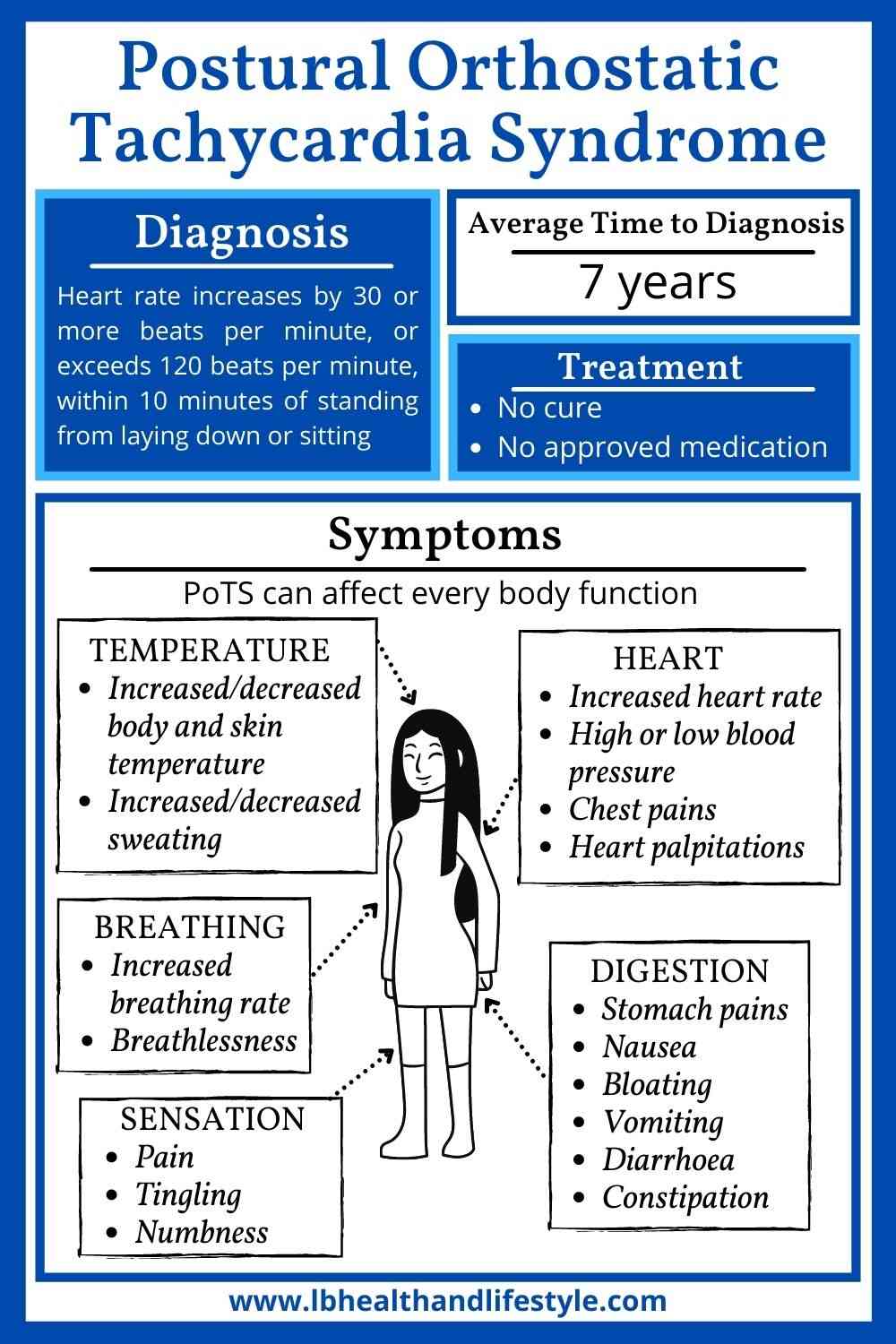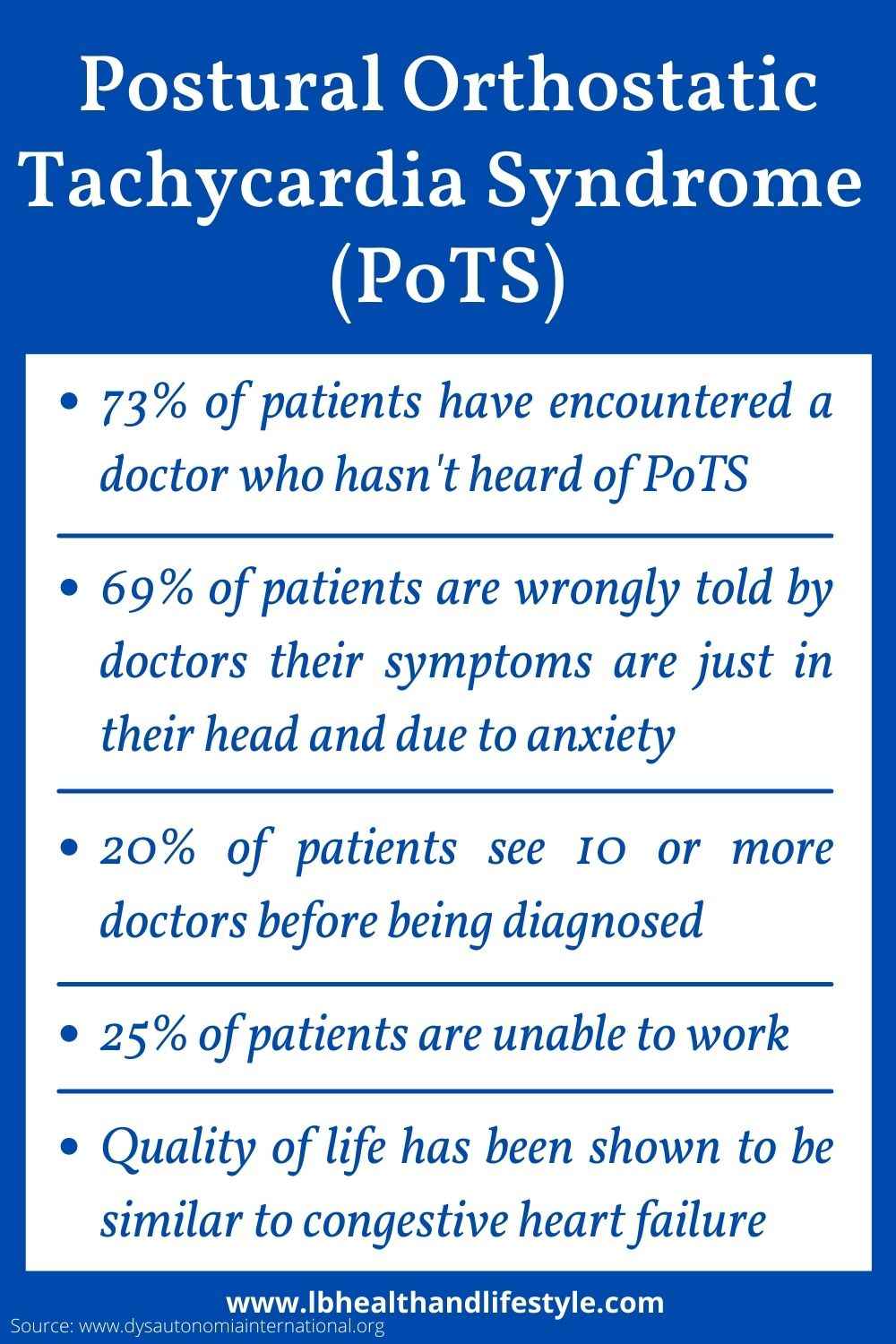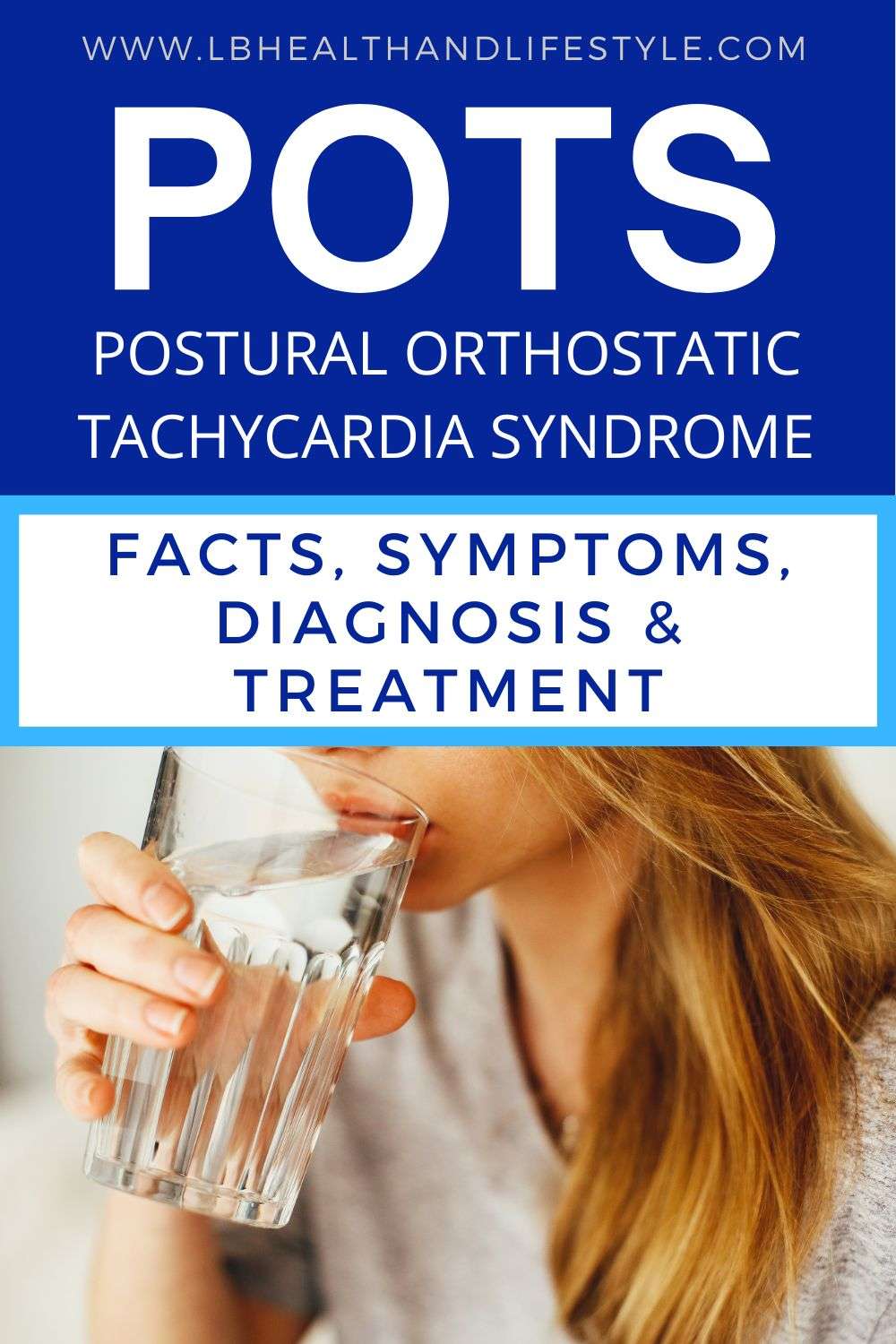Disclaimer: This post is intended for informational purposes only. I’m not a qualified practitioner and the information in this post is not intended to constitute or be a substitute for medical advice, diagnosis or treatment. Please consult a qualified practitioner if you have any questions regarding medical problems and before making any changes to your current diet or treatment plan. This post may contain affiliate links, meaning at no additional cost to you I will earn commission if you click on a link and make a purchase. As an Amazon Associate I earn from qualifying purchases. See my full disclaimer here.
What is Dysautonomia?
Dysautonomia is a dysfunction of the autonomic nervous system, which controls every body function without us consciously having to think about it, such as:-
- Heart rate,
- Blood pressure,
- Breathing,
- Temperature and
- Digestion.
There are 15 types of dysautonomia, one of which is postural orthostatic tachycardia syndrome, also called postural orthostatic tachycardia syndrome, POTS syndrome or POTS.
What is Postural Orthostatic Tachycardia Syndrome (PoTS)?
Normally when you go from laying down or sitting to standing, your heart rate goes up by 5-10 beats per minute. When you stand up gravity causes blood to fall down to the legs. The autonomic nervous system responds by narrowing the blood vessels to get blood flowing back up to the heart and brain.
However, for people with POTS, the autonomic nervous system doesn’t work correctly. The blood vessels don’t narrow causing blood to pool in the legs. To compensate for this, the heart beats faster to try to increase blood flow back up the body.
For a POTS diagnosis, during the tilt table test, when going from laying down to upright, a person’s heart rate increases by:-
- At least 30 beats per minute, or
- Increases to over 120 beats per minute, within 10 minutes of standing up.
- These criteria do not apply if someone has a low resting heart rate.

What are the symptoms of dysautonomia & POTS?
Dysautonomia and POTS symptoms affect every body function. The reduced blood flow back to the heart and brain can cause numerous debilitating symptoms throughout the whole body. These can severely reduce people’s quality of life, potentially leaving them:-
- Bedbound,
- Housebound,
- Unable to work,
- Unable to do simple everyday activities, like showering, cooking, eating, sitting upright and standing.

Dysautonomia and POTS Diagnosis and Treatment
Very few people have heard of POTS, including some doctors. The lack of knowledge results in patients being dismissed, misdiagnosed with anxiety and told its all in their head by medical professionals. People are also misunderstood, judged and excluded by family and friends.
The average time to diagnosis is 7 years and there is currently no cure and no authorised medication that can be prescribed. Consequently, many patients are left to do their own research into different POTS diet, treatments and therapies to manage their symptoms.
Related Post: Living With An Invisible Illness

my dysautonomia & POTS management journey
Click to read my blog posts detailing the POTS natural treatment remedies, tips and strategies that are helping me manage my symptoms so far:-
- Performing this 7 step morning routine at the start of each day to help ease symptoms and make getting out of bed easier.
- POTS Syndrome Diet A to Z Guide, including Elimination Diet Phase 1, where common food allergens are removed and Phase 2 (How To Reintroduce Foods After Elimination Diet) to identify food sensitivities, Eating 30 Plant Foods A Week, Eating Seasonally using this Eat The Seasons Month By Month Guide as well as implementing these 10 tips to improve digestion naturally to ensure my body can break down and absorb the nutrients from the foods I eat.
- Following these 9 tips to stay hydrated, including drinking this Best Electrolyte Drink For POTS.
- Resetting and regulating my nervous system by performing somatic tracking, implementing these 10 nervous system reset exercises, improving my vagus nerve activation by performing the 14 exercises detailed in this How To Activate Parasympathetic Nervous System post & stimulating these Vagus Nerve Acupressure Points.
- Switching to a low toxin lifestyle to reduce my exposure to the everyday toxins and chemicals we’re exposed to, by following these 6 free ways to start non toxic living, 15 simple swaps for a non toxic home & 10 tips for a non toxic kitchen.
- Supporting my body’s 6 channels’ ability to remove the toxins and chemicals we’re exposed to everyday as detailed in this How To Open Drainage Pathways post.
- Looking after my emotional health by implementing these 6 daily habits to improve mental health, performing a brain dump journal to release built up emotions and stresses, expressing gratitude by implementing these 8 gratitude journaling ideas and using this A to Z Gratitude List and altering my morning routine making five simple swaps to help when waking up with anxiety and increased symptoms in the morning.
- Breath retraining to correct and improve the way I breathe.
- Prioritising sleep and rest by following this 5 step nighttime routine to sleep better and making time to rest well, scheduling time for the 7 different types of rest our body needs.
- When flares occur, performing 6 activities in bed to help recover physically and caring for my mental health by utilising these 15 things to do in bed to ease anxiety and stress.
- Taking advantage of the free things in the world that God created to improve our health by implementing these 10 Healthy Habits to benefit physical and mental wellbeing that don’t cost anything.
- Implementing these 10 tips to stay cool & survive the summer heat when struggling with POTS Heat Intolerance.
POTS Syndrome Exercises
One natural treatment for POTS is exercise therapy. Click to view the videos below for a POTS exercise program I follow:-
More Information
The more people learn about dysautonomia and POTS the quicker people suffering will be diagnosed. This will allow them to receive more effective treatment and get better support from family and friends. For more information, please check out the POTS UK and Dysautonomia International websites.
If anyone has any questions about anything they have read, please ask. And if you know anyone with dysautonomia, POTS or any other illness, please keep in touch with them. A message, phone call or visit, to know we’re thought about and aren’t alone really does mean the world.
Contact me and Follow me on social media
To follow more of my journey follow me on Instagram, Facebook, Twitter, Pinterest & Youtube.



This is a fantastic look at Dysautonomia and POTS, conditions that are still not that well known about within the general public, and even many docs and specialists don’t know all that much. You’ve explained things really clearly and I love the image with the labelled symptoms. xx
Thank you so much Caz, I really appreciate your comment 🙂 Sadly it’s so true, you have to fight for every referral as even so many doctors and medical professionals haven’t heard of dysautonomia and POTS syndrome. The only pots the general public have heard of are the pots you cook food in! xx
I had Covid in 2020.I have been suffering with every symptom of dysautonomia for the past 3 months. Hospitalized x 4 days in May. Diagnosed
Had “ground glass ” in my lungs, pneumonia. Using nebulizer treatments to help me breathe better. Recently Ive fallen x 2. Have been to ER twice in last 4 days. Physicians Ive seen dont know whats wrong. Today I read an article about dysautonomia and listed were the symptoms Ive been having for the last 2months.The physicians Ive seen with all their years of education did not know and here I am, a retired nurse and I find an article that gives me my diagnosis in
In 5 minutes! Today In ER I was given IV fluids. I told the Dr how much better I feel after I have the fluids. He told me that it was in my head that I feel better!
Now that I know whats wrong, where do I go fom here?